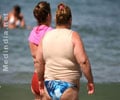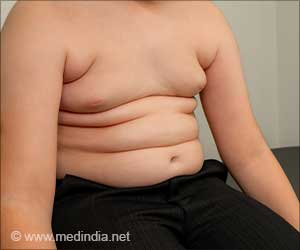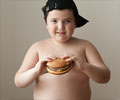Treatment for Childhood Obesity
Obesity is actually the most simple medical condition to recognize but equally difficult to get rid of. Lifestyle and environment are the most difficult to change. A child’s obesity is a big challenge for parents. The child, being immature and sensitive, has to be handled with a lot of care.
Apart from getting a thorough medical checkup done for ruling out any medical or genetic causes, making long term improvements in diet, eating habits, behaviors and increasing the physical activity is the best way to treat weight problems in children. The more important goal is to slow or stop weight gain. This involves long term changes in the eating habits and attitudes of the entire family, their diet and eating behavior.
Diet management
A healthy diet and eating style should be followed. Weight loss diets are an absolute sin for the child’s health.
- The changes made in a child’s eating plan should be introduced gradually.
- For every change made, the child should be explained the benefits of the foods and reasons for the change.
- The meals should very well complement the child’s routine and he or she should not find following a certain eating pattern cumbersome.
- The mother has to remember that every food should be nutrient and fibre dense rather than just being packed with lots of calories. Foods like whole wheat, oats, ragi, jowar, broken wheat, pulses, skim milk and products, egg whites and loads of fruits and vegetables have to be chosen over refined flour preparations, fried foods, sweets, sugary drinks, colas, farsans, bakery foods, and biscuits.

- A 6 to 7 small-meal eating pattern should be followed. The child will not feel hungry if he eats at regular intervals.
- Efforts have to be taken to make the home food attractive and delicious. Snack foods should be modified to make them rich in fibre.
- Supplementing the meals with fruits, vegetables and wholesome beverages, would curtail the child from overeating and portion control would be practiced.
- Make regular home meals a habit.
- Serve children a planned nutritious snack after school.
- When going out feed the child with some filling food so that the craving for outside food is avoided.
- As most children love eating out, gorging on junk food should be restricted to not more than once a week.
- Parents have to be a good role model for the child.
- Encourage the child to drink water to quench thirst.
- Be supportive and provide positive encouragement to the child.
Physical activity
The child should be encouraged to exercise and be involved in various outdoor sports and activities. Children should be pushed to do exercises that burn calories and use different muscle groups. Swimming, skating, bicycling, tennis, and cricket are sports that burn lot of calories. More importantly, parents should restrict the amount of time spent in watching TV, sitting at the computer, or playing video games.
Getting completely involved in any one vigorous sport of the child’s choice could make him or her champ in that sport and also mange weight effectively.
A study conducted on 120 obese children in the age group of 4 to 12 revealed that the total caloric intake of the children was not too high. On the contrary, calories derived from fat were more than the recommended 25 percent and lesser than 20 percent from protein. It was also found that lack of physical activity and TV viewing for more than an hour daily contributed positively to child obesity.
Obesity is easier to prevent than to treat. Helping the child lead healthy lifestyle begins with the parents.





















